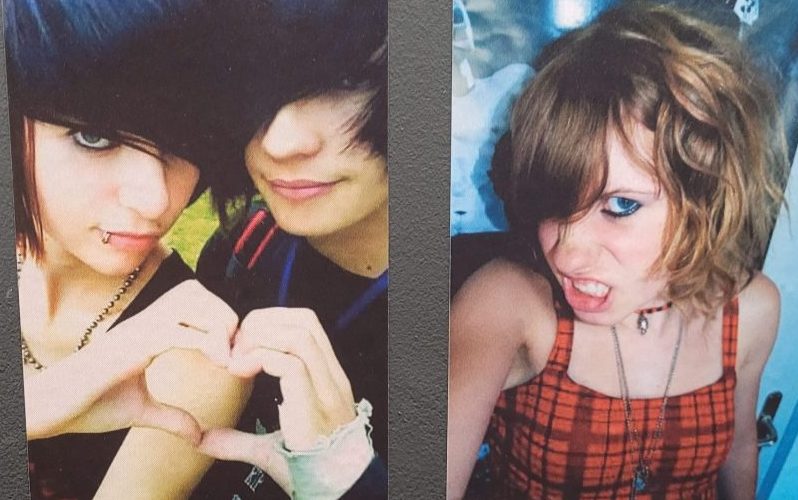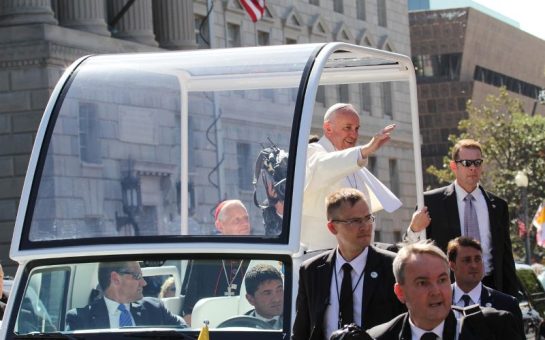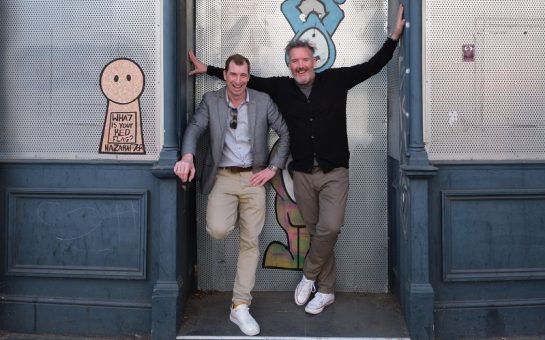Tucked away in an inconspicuous fold of the Barbican Centre’s confusing sprawl of cultural offerings lies a new exhibition entitled ‘I’m Not Okay: An Emo Retrospective’.
Teenage angst drips from a collage of unmistakably noughties images, transporting the viewer to a time when an infant internet was home to a generation of misfits.
Running from September to January, this pilot exhibition seeks to capture the ‘lost’ subculture of emo as it flourished in the virtual reality of Y2K cyberspace, finding refuge in a futuristic online scene that thrived alongside a grittier reality of gigs held in grimy pub basements.
Consisting of personal memorabilia ranging from bedroom selfies to well-loved music merch with decades-old diaries with readable excerpts thrown in, it all serves to convey a palpable sense of youthful rage, confusion and kinship.

Rory, 35, remembers becoming hooked on the ska and pop-punk music of the nineties through the CDs left around the house by his older sister, an interest which led to a half decade spent involved in an emergent scene of emo music and culture.
For Rory, the scene culminated in the weekend festivals ‘Give it a Name’ in the mid noughties, by which point he was sporting skinny jeans, eyeliner and dyed black hair with fringes.
Rory said: “Emo came at the perfect time for my cohort, distilling the angst, romanticism, and drama of teenage life in the mid-noughties.”
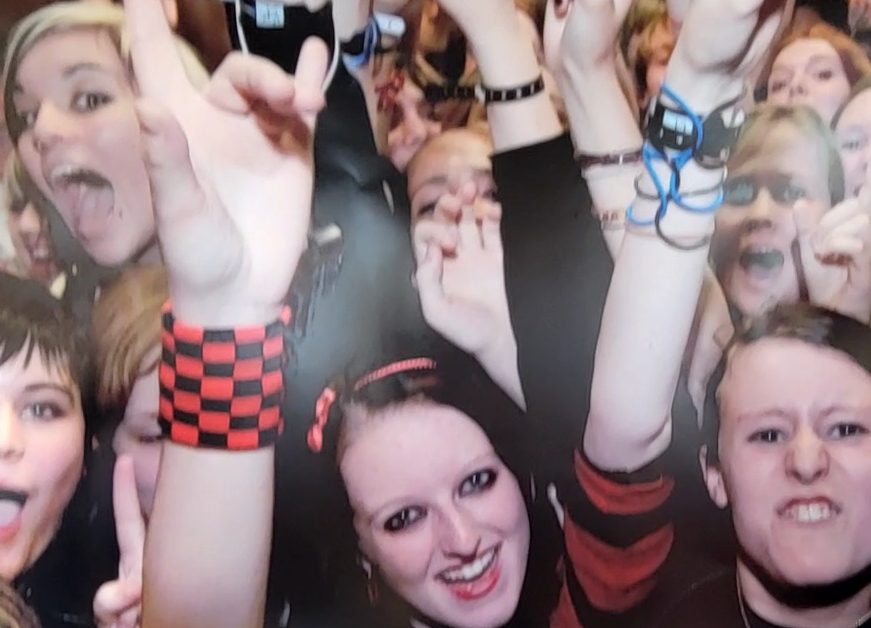
He described the birth of the online music scene as a gamechanger, allowing access to a global library of music at the click of a mouse.
Rory recalls browsing the revolutionary social media platform MySpace with the user name “hangondoesntthismakemeemo”, a site which served as a gateway for local bands to reach the growing, transatlantic market for punk, hardcore and emo.
Of the new exhibition, Rory gave a mixed review.
While he praised the representation of the so-called ‘MySpace’ era of emo, he pointed out that the sub-culture has roots firmly planted in the punk scenes of previous decades, with the barbican choosing to focus exclusively on what he terms “the new wave.”
Maybe it’s personal nostalgia from glimpses caught at a young age, but looking back in time upon the vaguely vampiric faces which sent many a well-meaning mum and dad into fits of concerned over-parenting, it all came off as strangely quaint.
There was something oddly sweet about browsing a jumbled collection of faded My Chemical Romance T-shirts and tattered checkerboard Converse trainers, all while overhearing knowing chuckles and exclamations of sentimental recognition from veterans of the emo scene.

Now elder statesmen of a culture defined by opposition to the compromise and conformity that prevails with age, these old-timers were given away by the remnants of past selves: a dash of red dye in the hair here, a wince-inducing piercing there – signs that somewhere inside the mind of the well-adjusted 30-something-year-old, the spirit of emo lives on.
Barbican host Jacob, 27, remembers enjoying noughties punk-emo music as a teenager as a way to connect others who struggled to fit in.
Scanning the exhibition he said: “It’s nice to see the things I felt judged for everyday appreciated, it really shows how much larger of a community there is.”
Of the emo scene he said: “It’s similar to punk rock in so far as it’s the ‘anti’.
“Anti-establishment, fitting in with the misfits, it shows that that you aren’t really a misfit.”
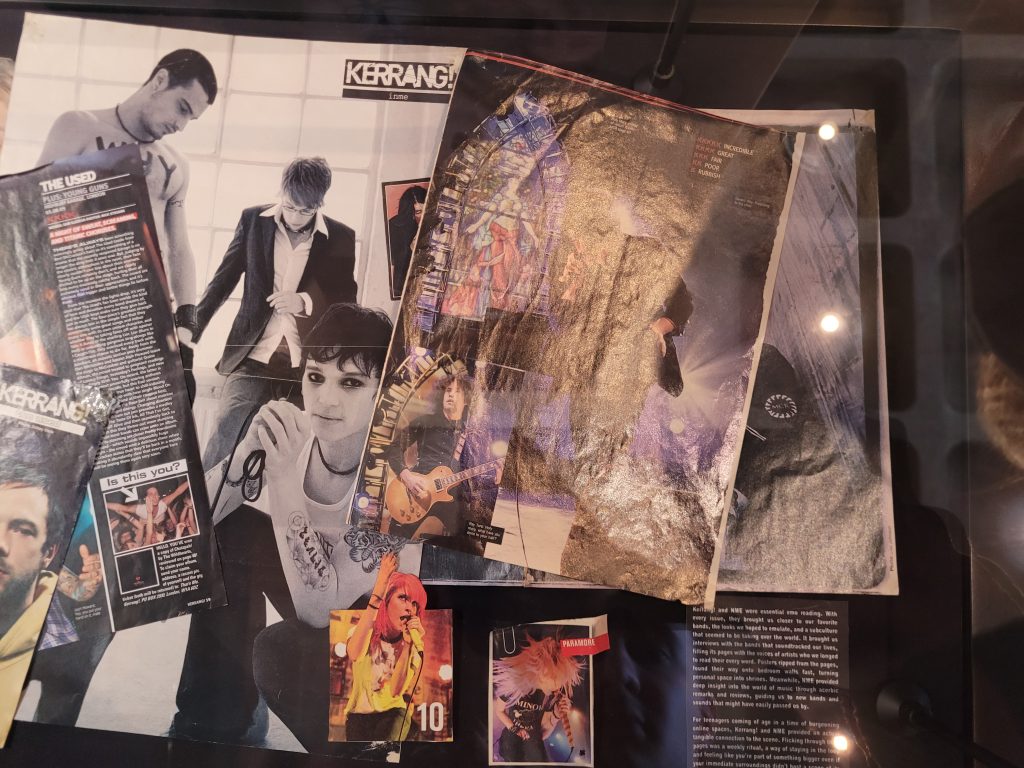
While Jacob wore only a subtle layer of eyeliner to hint at an emo-adjacent past, some wore their years of service proudly.
Hair liberally streaked with red or purple and an outfit ostensibly stitched together from the costume departments of Mad Max and Edward Scissorhands, some stuck out as emo from a mile away.
However historical membership to the movement was displayed, all those that drifted in and out of ‘I’m Not Okay’ seemed to do so with a sense of reverence.
Taking note of the CD that defined an era, the concert still relived or simply the iconic look of a MySpace message board upon which online connections offered lifelines – this unassuming assortment of memorabilia amounted to a shrine to those people, that time and these things that once meant everything.
